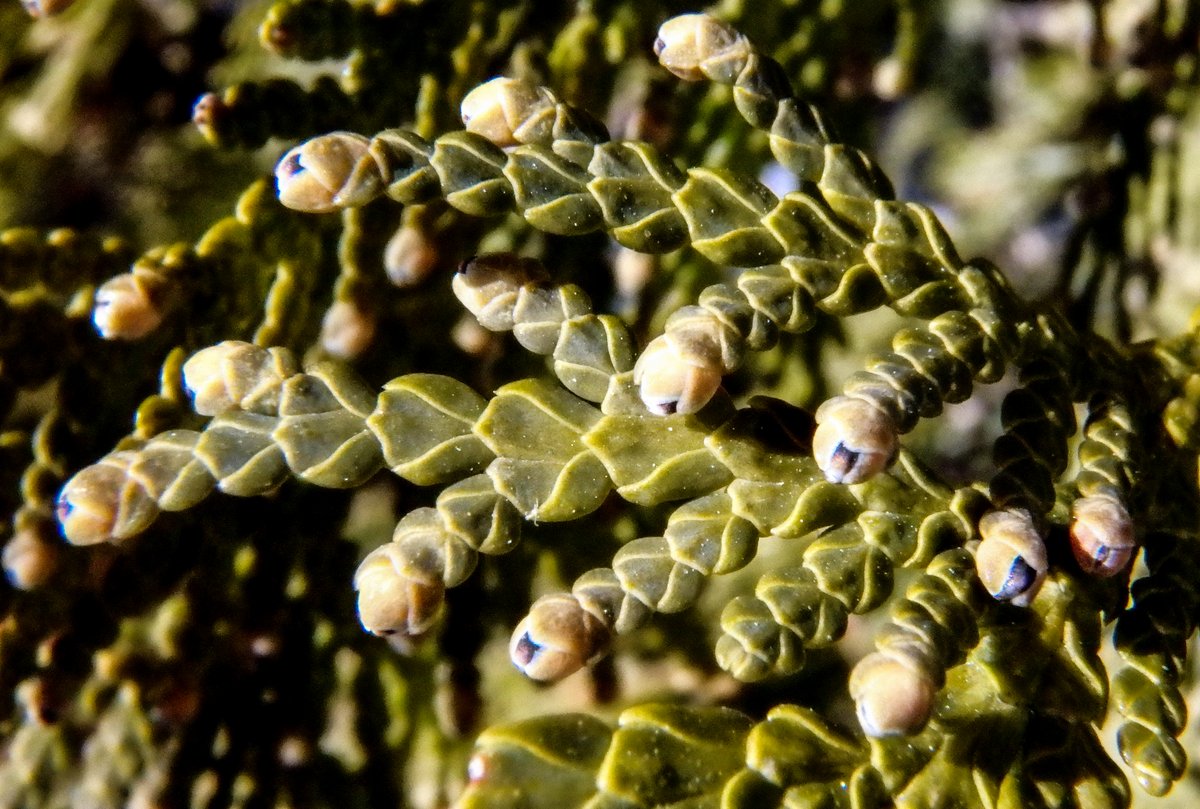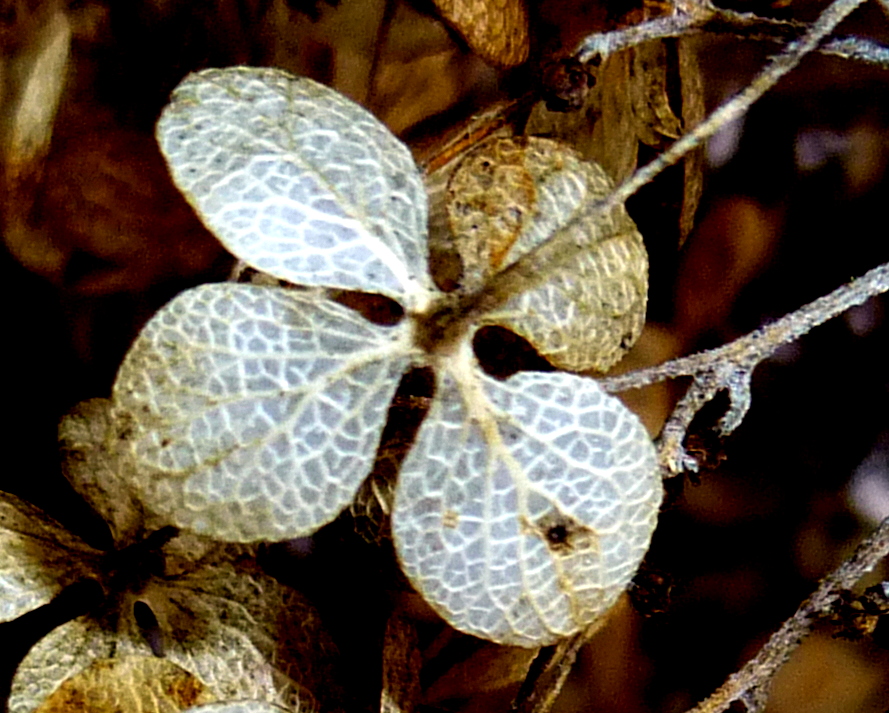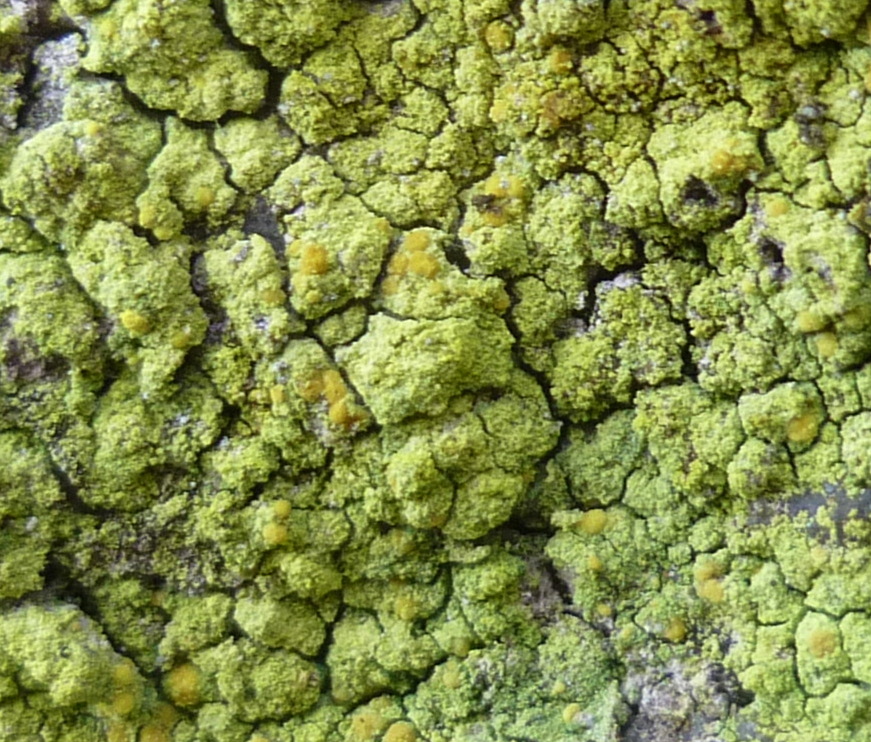
Half Moon Pond in Hancock iced over but then it warmed up and the ice melted quickly. All that was left early one morning was the mist that was left from the melting. I wanted to get a shot of it but all I had was my cell phone. I decided to try it anyway, and this is what the phone’s camera saw. What I saw was not quite so much bright sunlight up in the clouds, though dawn was just breaking over the hills behind me. I liked what the phone camera saw though, and I hope you will too.

I can’t tell you how many times I’ve walked quite far into the woods after seeing what I thought was a beautiful flower, only to find instead that it was a feather. But I’m never disappointed because feathers can often be as beautiful as flowers. These “blossomed” on a hazelnut twig and changed shape contantly in the wind. They were very fine and soft, like goose down.

I know these are bird tracks and I know the middle longer toe points in the direction the bird was facing but I don’t know why they were so long or what the lines behind them were about. It looked to me like the bird went into a skid when it tried to land. Their feet weren’t very big but there were many prints around the area and I’m guessing dark eyed juncos made them. You can often see flocks of sometimes twenty or more juncos along roadsides in winter, presumably looking for small seeds.

At work one morning I spotted a dark colored animal a little bigger than a house cat running from one of the buildings. It ran with a kind of loping gait like a mink but quite fast. One of the paw prints we found afterwards is in the above photo but we can’t know if it belongs to the animal we saw. There are lots of animals in these woods. But judging by the animal’s size and the way it ran like a big mink, we think it must have been a fisher cat. Fisher cats aren’t cats, they are members of the weasel family, and they don’t eat fish. They were hunted for their fur almost to extinction in times past and though they are making a comeback they’re very wary of man and aren’t often seen. They’re usually active at night so seeing this one in daylight was a rare thing.

I believe these turkey feathers tell the story of the fisher cat and why it was near one of the buildings. They were found near the spot it ran from. Fishers eat small to medium sized animals and birds, and will also eat beechnuts, acorns, apples and berries. They will also eat porcupines, leaving nothing but the hide and a few bones behind. In fact they’ll eat just about anything and I’ve heard they have a blood curdling scream when they’re on the hunt. Just for fun (?) I went to You Tube and listened to a fisher cat scream, and now I understand how some people have been scared half to death by them at night in the woods. It’s an eerie sound, and that’s putting it mildly.

A huge old oak tree died where I work and when it was cut down the butt end showed purple staining, meaning it has steel or iron objects like screws or nails in it. Sawmills look for this kind of thing when logging trucks bring in a load of logs and they’ll reject the whole load if they see it. This log was easily four feet across but it will never be sawed into boards.

I used to feel comfortable in the knowledge that any time I saw this platy bark in the shape of a target on a tree, I was looking at a red maple. But then last fall I saw a very old yellow birch with target canker that looked just like the example in the above photo. Now, I thought, I can’t be quite so sure of what I’m seeing, so I returned to the book Bark; a Field Guide to Trees of the Northeast, by Michael Wojtech. In it he does indeed say that red maple is the only tree in the northeast that develops target canker, so what of that birch? I don’t know every tree in the forest but if I can’t tell the difference between a red maple and a yellow birch, I’d better give up nature blogging. The answer I think, is to go back and find that birch and better document its bark.

Here is the only photo I took of the yellow birch I saw with target canker, which can be clearly seen on the tree. I can remember how surprised I was and thought that I must be mistaken but no, I’ve never seen maple bark peel and curl like that. The trick will be to find this tree again in a forest full of trees.

I had to go to the local car dealership to have my car serviced and while I was waiting, I noticed this piece of tree bark sitting on a counter. I was happy to find it there, not so much because of the bark itself, but because someone thought it was beautiful enough to show in the waiting room like an art object. It grabbed someone’s attention, as it did mine.

Because of all the rain we had this summer fruits, seeds and nuts are everywhere, including the poison ivy berries (Toxicodendron radicans) seen here. I’ve never seen so many of the small fruits on poison ivy vines. Though I like to get photos of them when they’ve turned white and are fully ripe, the birds eat them so fast I usually can’t find any. All parts of this plant can give you quite a rash if touched, so I try not to get too close. Even inhaling the smoke from a fire where it is being burned can cause severe throat issues.

I finally found some ice needles that really looked like needles. Usually they have been stepped on and look stubby, with squared off ends. A lot has to happen for them to form but they’re fairy common once you know what to look for. And what to listen for; the soil they grow in will crunch when it’s walked on. I’ve read that each thin needle is hexagonal in shape and that needles 16 inches long have been found, but most of the ones I see are less than 5 inches long. These might have been closer to 6 inches long.

I saw this feature in some puddle ice. It looked like the disc or lens shape froze and the water moving around it created waves. But how could this be? Wouldn’t all of the puddle surface have frozen at the same time? I don’t expect anyone to answer this; I’m just thinking out loud. Puddle ice is an endless source of fascination for me because it’s amazing what you can see in it.

I think weevils must have killed the terminal leader of this hemlock tree (Tsuga canadensis) and then two of its branches became new leaders, giving it a U-shaped appearance. I usually see this on white pine, not hemlock. White pine weevils do attack lots of other evergreen species like spruce and fir but I haven’t heard of them attacking hemlocks, so I can’t say what might have caused it.

Speaking of eastern hemlocks, I’ve been lucky enough to be able to look out a window at work to see gray squirrels trying to get at the seed cones. They’ll hang from the branch by their back feet and tail and grab the small cones with their front paws. I’ve seen four or five squirrels working a single tree, and one day I saw an eagle flying over the tree they were in. The squirrels disappeared in a hurry that day. When I look at this photo of a cone I wonder if man thought up roof shingles by looking at something like this.

The white stripes on the undersides of the flat hemlock needles come from four rows of breathing pores (stomata) which are far too small to be seen without extreme magnification. The stripes make the tree very easy to identify.

I found these squirrel tracks in my yard and I wasn’t surprised because there are also lots of hemlock trees here. I’ve seen chickadees eating the seeds but until this year I’ve never seen squirrels eating them.

Northern white cedar (Thuja occidentalis) also grows in my yard. There are many seed pods on the cedars and robins, common redpolls, pine siskins, and dark-eyed juncos eat the seeds. Many small birds use the trees to hide in and robins nest in them each spring. The open seed pods always look like beautiful carved wooden flowers to me. The Native American Ojibwe tribe thought the trees were sacred because of their many medicinal uses, and maybe they were. They cured scurvy for many a European.

A few years ago I started noticing what I thought looked like teeth marks on lichens and wrote and showed photos of it here. Now I’m seeing those same marks on certain fungi, like this tinder fungus. The squiggly lines in the top bluish portion are what I’m talking about.

I finally found out when a knowledgeable reader wrote in, that these lines and squiggles are not chipmunk or mouse teeth marks. He measured the marks and found that no American mammal had teeth that small. Instead they’re caused by algae eating land snails. Accoding to what I’ve read “squiggly lines or tiny fan patterns on rock or tree bark show where a snail has scraped off algae or fungi, leaving a paler spot. Smooth-barked red maple or American beech are good trees to check for snail or slug feeding tracks. You can look closely at mushrooms to see if a chewed area is found along with a slime trail.” The top of this mushroom did indeed look chewed. Snail mouths (radula) are raspy and are said to feel like a licking cat’s toungue if you hold one in your hand. That’s another mystery solved.

Just before dawn one morning the full moon hung over Half Moon Pond and reflected in the new ice. This was after the ice I mentioned in that first photo had melted. I think the pond has frozen over and melted three times now, which shows what roller coaster temperatures we’re seeing so far this winter. It’s beautiful but a little unusual as well.
As children, we are very sensitive to nature’s beauty, finding miracles and interesting things everywhere. As we grow up, we tend to forget how beautiful and magnificent the world is. There is magic and wonder for eyes who know how to look with curiosity and love. ~ Ansel Adams
Thanks for coming by.













































































